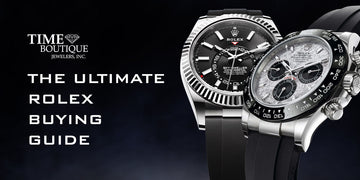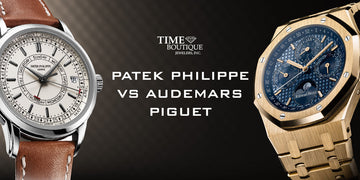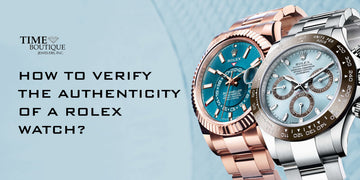
When considering purchasing a watch, it's important to start by understanding the type of movement you prefer. Differentiating between various mechanical movements and determining your preference for manual winding or a battery-powered quartz watch is crucial. Over the years, technological advancements have revolutionized the watchmaking industry, resulting in sleek and intricate ultra-thin mechanical movements. Today, watchmakers strive to create the most sophisticated and slim designs.
What is a Mechanical Watch?
Mechanical watches use a clockwork mechanism to measure time, while quartz watches rely on a battery. In a mechanical watch, the mainspring stores energy that powers the balance wheel, and the gear train transmits this energy to calculate the seconds, minutes, and hours. The escapement then releases the wheels, causing the hands to move at a constant rate. This mechanism is responsible for the ticking sound often associated with mechanical watches.
Mechanical movements exhibit a smooth sweeping seconds hand, unlike quartz watches that tick with individual movements. While certain luxury mechanical watches showcase this ticking motion as a testament to watchmaking technology, it is not commonly found.
Mechanical watches often incorporate synthetic jewels such as garnet, quartz, sapphire, or ruby. These jewels serve multiple purposes, including reducing friction within the movement for enhanced accuracy and extending the lifespan of various components. If you peek through the exhibition case backs, you'll catch a glimpse of these scattered jewels, adding to the watch's allure.
How Long Do Mechanical Watches Last?
Mechanical watches can last for multiple lifetimes when properly cared for. With the help of jewels that reduce friction within the movement, along with avoiding hard drops or water damage, these timepieces can endure. Patek Philippe is renowned for their Generations' Campaign, embodying the sentiment that "You never actually own a Patek Philippe. You merely look after it for the next generation.
Even a damaged watch can be repaired and continue working for many years. Watch manufacturers train skilled watchmakers to repair watches and provide regular servicing to ensure their longevity. Most modern watches have easily replaceable parts for convenient maintenance. However, vintage watches may require more effort to find original parts. The complexity of a watch's complications determines the level of maintenance attention it requires.
The Difference Between Mechanical Movements

Mechanical watches, including both automatic and manual wind watches, rely on mainsprings that need periodic winding. Discover the fascinating world of mechanical timepieces and their intricate movements.
Winding the Movement in Automatic and Manual Wind
Automatic movements in watches feature a rotor, an oscillating weight attached to the movement. Traditionally, the rotor is about half the size of the exhibition caseback. However, some brands now incorporate micro rotors, which are set into the movement for a slimmer profile. Prominent brands like Bulgari and Patek Philippe showcase micro rotors in their timepieces. In automatic watches, the rotor winds the movement as the watch is worn, creating a mesmerizing visual through the exhibition case back.
A manual wind watch is powered by the user turning the crown to manually wind the mainspring. These hand-wound movements are the oldest type of watch movements. Discover the charm of traditional hand-wound watches and their timeless appeal.
Automatic watches also offer the option of manual winding. It is recommended to wind the watch approximately 20-40 times if it has stopped before wearing it, to initiate the movement. This ensures optimal performance when wearing it on your wrist.
Avoiding Watch Damage When Winding the Movement
When winding the movement of your watch, it's important to exercise caution to avoid potential damage. Always wind until you feel resistance, regardless of the movement type. Remember, it's best not to wear the watch while winding. When on your wrist, it may be difficult to perceive the resistance, and winding at an angle can potentially harm the stem. Safeguard your watch by following these guidelines.
In a manual wind watch, you'll notice the resistance when the mainspring is fully wound, and the winding stem will cease to move. Experience smooth winding with our exceptional manual wind watches.
In an automatic movement, there is a possibility of damage through overwinding. However, most modern automatic movements are equipped with a built-in protection mechanism. Once the mainspring is fully wound, the winding mechanism will decouple from it, preventing any further winding. However, it's worth noting that older watches and movements may lack this added protection, which can potentially lead to damage.
To ensure optimal performance of your automatic watch, it is recommended to wear it regularly. The rotor, which winds the mainspring, will keep it charged, eliminating the need for manual winding unless the watch stops. Rest assured that the rotor will not overwind the watch and will continue to oscillate even after fully charging the mainspring.
By following these guidelines, you can maintain the longevity and functionality of your automatic watch while enjoying its precision timekeeping.
Power Reserve: Automatic Vs. Manual Wind Watches
One notable distinction between automatic and manual wind watches is the extended power reserve offered by manual winding. Typically, a fully wound automatic watch provides a power reserve of 36 to 42 hours, while a manual wind watch can offer a power reserve ranging from 48 hours to 15 days. Discover the differences in power reserve between automatic and manual wind watches here.
Some watches have exceptional power reserves, like the Lange 31 with a 31-day power reserve and the Hublot MP-05 LaFerrari with a 50-day power reserve. To maximize the power reserve, these watches often have more than two mainsprings, unlike most watches that have only one. In fact, the Hublot boasts an impressive 11 mainspring barrels.
What is a Good Mechanical Watch?

When it comes to choosing a mechanical watch, there are no "bad" options. Several factors should be considered when deciding which mechanical watch to own and wear. It's important to take into account the following factors for a well-informed decision:
- Movement type: do you want automatic or manual winding?
- Price point
- Brand
- Case size and thickness
- Complications
Mechanical watches are available in a wide range of prices, spanning from under $500 to over $600,000, based on the brand and complications. Discover our curated selection of top mechanical models under $5,000. Find your perfect timepiece today!
When choosing a brand to own, it's crucial to consider the unique options, models, and price points they offer. Automatic winding watches are generally slightly thicker than manual wind watches due to the rotor's space requirements. Additionally, the case size of a watch can vary depending on the manufacturer, with more complications often resulting in a thicker case. Explore our comprehensive guide to find the perfect brand and watch for your needs.
If you plan to wear the watch while diving, an automatic watch would be ideal. For formal occasions, consider a manually wound dress watch with a slim profile. If you intend to wear the watch casually every day, it ultimately comes down to personal preference and finding models within your preferred price range. Choose a watch that suits your needs and style.
Top Mechanical Watches for Men and Women
Here are some of our favorite mechanical watch models that you'll love!
Are you in search of the perfect mechanical watch from the finest luxury watch brands? With a wide array of options to choose from, finding the right one might seem daunting. Each model possesses its own distinct charm. So, I'm curious, do you have a favorite mechanical watch? Discover the exquisite collection at TB Jewelers and find the ideal timepiece that truly resonates with you. Explore our selection now!




